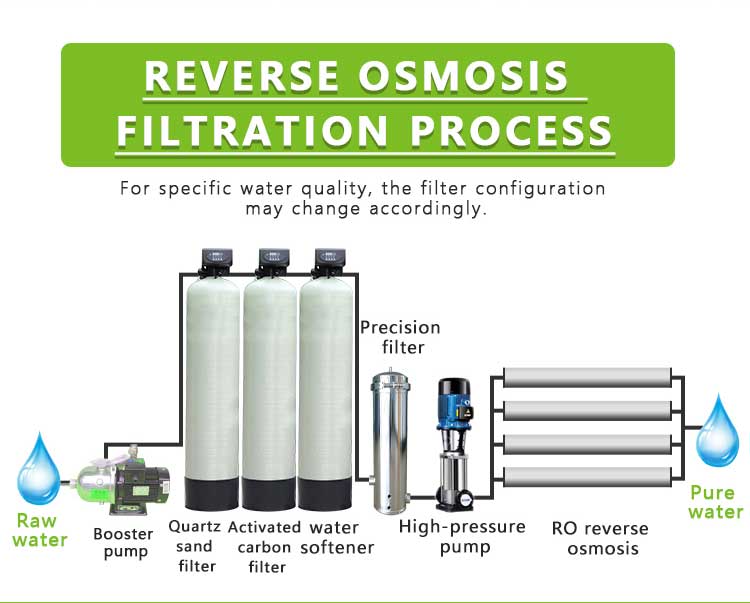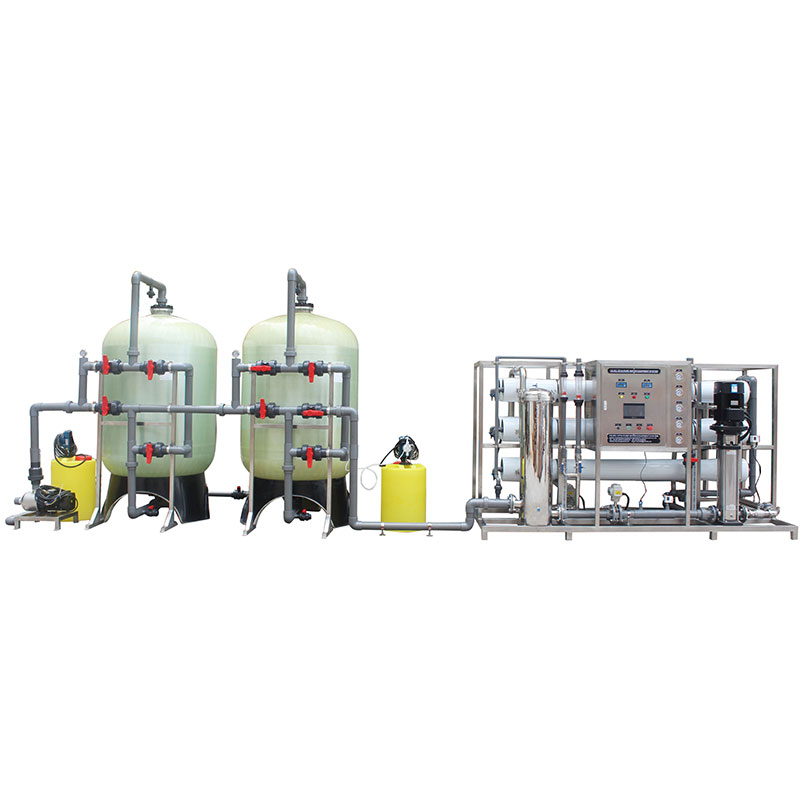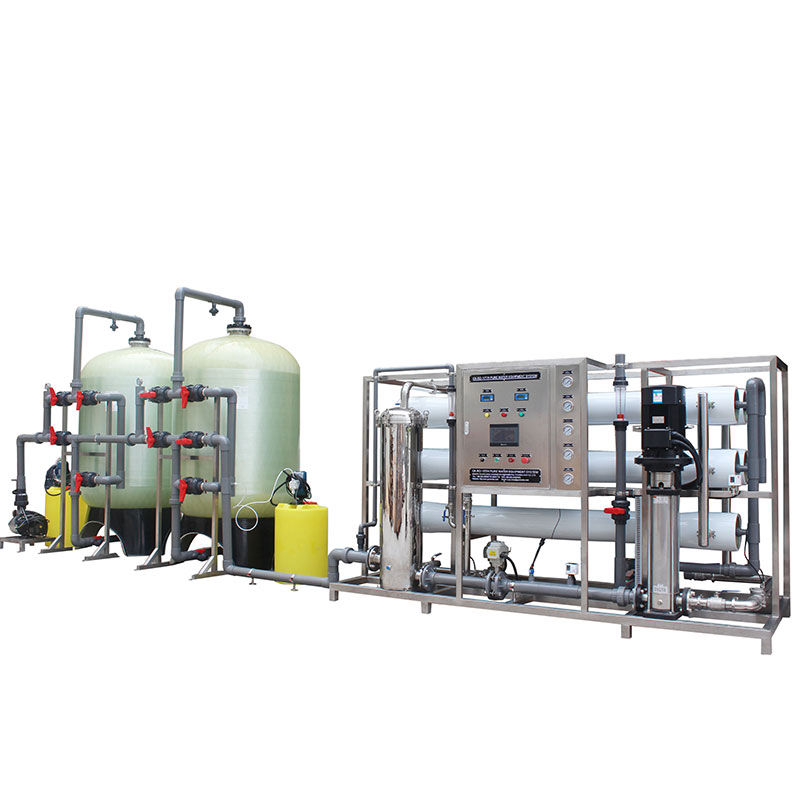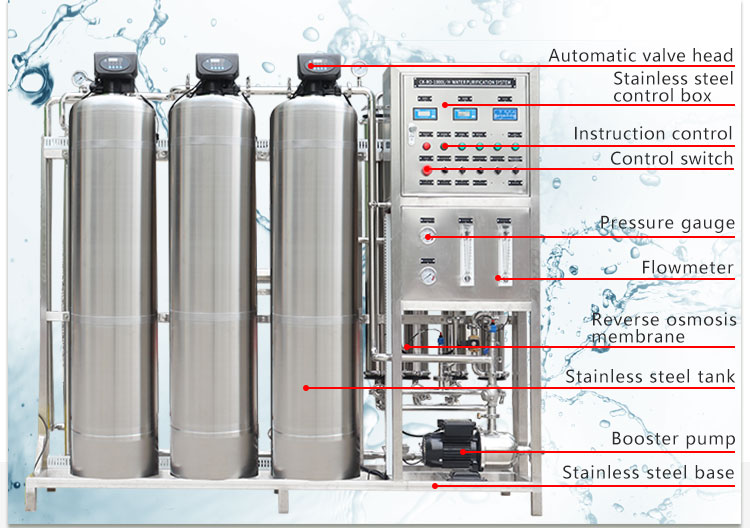What is tertiary system wastewater treatment? Is reverse osmosis used?
As the problem of water shortage becomes increasingly serious, wastewater treatment technology has been widely used and developed worldwide. Among them, tertiary system wastewater treatment, as an advanced wastewater treatment process, has received more and more attention due to its high efficiency and wide applicability.
So, what is tertiary system wastewater treatment? In this treatment system, is reverse osmosis technology used? This article will answer these questions in detail.

What is tertiary system wastewater treatment?
Tertiary system wastewater treatment, also known as deep treatment or advanced treatment, is a process of further purifying wastewater after primary and secondary treatment. Its main purpose is to remove dissolved organic matter, inorganic matter, pathogens and other difficult-to-degrade pollutants in water, so that the treated water can meet higher discharge standards or reuse standards.
1. Primary treatment:
Primary treatment is mainly a physical treatment process, the purpose of which is to remove suspended solids and floating objects in wastewater. Common methods include screens, grit chambers and primary sedimentation tanks.
● Screens: used to intercept larger floating objects and suspended objects.
● Grit chamber: removes larger particles by sedimentation.
● Primary sedimentation tank: uses gravity to settle suspended solids.
2. Secondary treatment:
Secondary treatment is mainly a biological treatment process, the purpose of which is to remove soluble organic matter and some nutrients such as nitrogen and phosphorus in wastewater. Common methods include activated sludge method, biological filter and oxidation ditch.
● Activated sludge method: degrade organic pollutants through the metabolism of microorganisms.
● Biological filter: use microbial membrane attached to the filter material to degrade organic matter.
● Oxidation ditch: a modified activated sludge method suitable for small sewage treatment plants.
3. Tertiary treatment:
Tertiary treatment is a further physical, chemical or biological treatment of wastewater after secondary treatment, the purpose of which is to remove residual organic matter, nutrients and pathogens. Common methods include chemical precipitation, filtration, disinfection, reverse osmosis and ion exchange.
● Chemical precipitation: add chemical agents to convert soluble pollutants into insoluble precipitates.
● Filtration: Remove tiny particles and dissolved substances through sand filtration, carbon filtration or membrane filtration.
● Disinfection: Kill pathogenic microorganisms in water by using chlorination, ozone or ultraviolet light.
● Reverse osmosis: Remove soluble salts and organic matter under high pressure using a semipermeable membrane.
● Ion exchange: Remove ionic pollutants in water through ion exchange resins.

Reverse osmosis technology in tertiary system wastewater treatment
Reverse osmosis (RO) is a high-efficiency membrane separation technology commonly used in tertiary wastewater treatment. It separates soluble substances in water under high pressure through a semipermeable membrane. Reverse osmosis technology plays an important role in deep treatment and reuse of wastewater.
1. Working principle of reverse osmosis:
The basic principle of reverse osmosis is to use the selective permeability of the semipermeable membrane to make the solvent (water) pass through the membrane under high pressure, while the solute (pollutant) is retained on the inlet side of the membrane, thereby achieving separation of solvent and solute. The pore size of the reverse osmosis membrane is very small, generally 0.0001 microns, which can effectively remove pollutants such as soluble salts, organic matter, bacteria and viruses.
2. Application of reverse osmosis in tertiary wastewater treatment:
In the process of tertiary wastewater treatment, reverse osmosis technology is often used in the following aspects:
● Removal of soluble salts: Reverse osmosis can effectively remove soluble salts in wastewater, so that the treated water can reach a higher reuse standard.
● Removal of organic matter: The reverse osmosis membrane can intercept most organic matter and further reduce the content of organic pollutants in water.
● Removal of microorganisms: The pore size of the reverse osmosis membrane is extremely small, which can effectively block bacteria and viruses and improve the safety of water.
3. Composition of the reverse osmosis system:
A complete reverse osmosis system usually includes the following parts:
● Pretreatment system: including sand filtration, carbon filtration and ultrafiltration, etc., used to remove large particles, suspended matter and some organic matter in the raw water to protect the reverse osmosis membrane.
● High-pressure pump: Provides the high pressure required for reverse osmosis to overcome the osmotic resistance of water molecules passing through the semipermeable membrane.
● Reverse osmosis membrane assembly: the core part, which separates water and solutes through membrane separation.
● Post-treatment system: including disinfection, pH adjustment and remineralization steps to ensure the quality and stability of the produced water.

Comparison of reverse osmosis with other tertiary treatment technologies
Although reverse osmosis has significant advantages in tertiary wastewater treatment, it is not the only treatment technology. Other treatment technologies may also be adopted according to the specific wastewater composition and treatment requirements.
1. Chemical precipitation:
Chemical precipitation removes pollutants by adding chemical agents to convert soluble pollutants in water into insoluble precipitates. This method is suitable for removing phosphorus, heavy metals and some organic matter.
● Advantages: simple process, low equipment cost, easy operation and maintenance.
● Disadvantages: chemical sludge generated needs to be treated, which may introduce secondary pollution.
2. Filtration:
Filtration methods include sand filtration, carbon filtration and membrane filtration, which are mainly used to remove suspended matter and some soluble pollutants in water.
● Advantages: easy operation, low cost and wide application range.
● Disadvantages: Limited removal effect on dissolved organic matter and ionic pollutants.
3. Disinfection:
Disinfection methods include chlorination, ozone and ultraviolet disinfection, which are mainly used to kill pathogenic microorganisms in water.
● Advantages: It can effectively kill bacteria and viruses and ensure water quality safety.
● Disadvantages: Some disinfection methods may produce by-products that need to be treated and monitored.

Practical application of three-stage system wastewater treatment
1. Municipal sewage treatment plant:
In municipal sewage treatment plants, tertiary treatment is often used to remove nitrogen, phosphorus and organic matter remaining after secondary treatment to ensure that the treated water meets the discharge standard or reuse standard. Reverse osmosis technology is widely used in some high-standard reuse water treatment, such as drinking water reuse, industrial water and agricultural irrigation water.
2. Industrial wastewater treatment:
In industrial wastewater treatment, tertiary treatment is used to remove specific pollutants, such as heavy metals, dyes and organic solvents. Reverse osmosis technology plays an important role in wastewater treatment and reuse in industries such as pharmaceuticals, electronics and chemicals.
3. Recycled water treatment:
Recycled water treatment is the process of treating municipal sewage or industrial wastewater for non-drinking purposes, such as landscape irrigation, industrial cooling and toilet flushing. Reverse osmosis technology can provide high-quality recycled water in the process of recycled water treatment to meet the water quality requirements for different purposes.
Conclusion on tertiary system wastewater treatment
Tertiary system wastewater treatment is an advanced treatment process that further purifies wastewater through physical, chemical and biological treatment methods to meet higher discharge or reuse standards. As a high-efficiency membrane separation technology, reverse osmosis technology plays an important role in the tertiary treatment process, especially in removing soluble pollutants and microorganisms.
Understanding the principles and applications of tertiary system wastewater treatment will help to better select and design wastewater treatment solutions and protect the environment and water resources.




